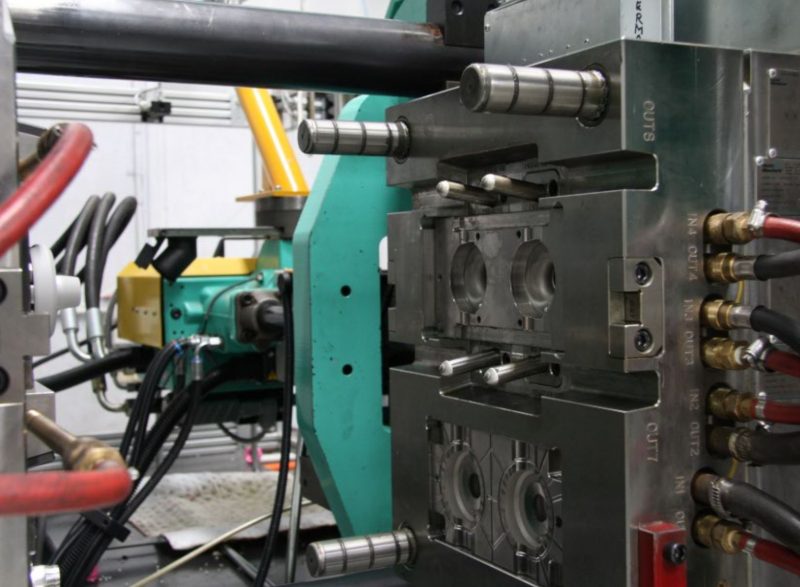PLASTIC INJECTION MOULDING IS THE CORE OF OUR BUSINESS
History of Plastic Injection Molding
Since John Wesley Hyatt and his brother Isaiah patented the first basic plunger plastic injection molding machine in 1872 there have been many changes. They only had celluloid plastic available at the time, now we have hundreds of choices. As to be expected, their machine was crude, they could never have foreseen the capabilities of the modern machines. As engineers and industrial designers increase the complexity of plastic injection molded components, machinery manufacturers and chemical companies rise to meet the new challenges that they create and deliver solutions. W&S is always in touch with the latest developments in industry innovations and are able to deliver the best advice and solutions for your applications.
If you would like to learn more about the history of injection molding you can read more here
Injection Molding Process

Arburg co molding (2K) machine
Injection molding can be described in simple terms as the high pressure injection of liquid plastic raw material into a mold which shapes, cools and solidifies the polymer into the desired shape.
For more detail about how the process works you can read more here
Injection Molding Machines
Our Sydney Australia plant has injection molding machines that range from 20 tonne clamping capacity to 700 tonne and our Johor, Malaysia has machines from 80 tonne to 350 tonne.
No matter your application, we have a machine to suit including multi-component (2K) molding.
Our latest Engel Molding machines in both our Sydney and Johor, Malaysia plants have state-of-the-art technology including:-
- IQ weight control – a system that monitors and controls the injection process to ensure accurate shot weight by altering parameters to suit changes in material viscosity due to variations in ambient conditions and material variation. If you are interested in this technology you can read more here.
- IQ clamp control – a system that monitors and controls the clamp process to ensure that sufficient clamping force is maintained throughout the process. This minimises the risk of flash and ensures the safety of the mold tool. If you are interested in this technology you can read more here.
- Servo drive units – all major functions of these machines are powered by electric servo motors. This increases efficiency and accuracy.
- Our Engel Duo injection molding machines are manufactured to a two platen design providing savings in energy consumption on mold movement and occupying much less floor space than conventional three platen machines.
Our Arburg and Kraus Maffi injection molding machines provide the latest technologies with extraordinary accuracy and repeatability.
We have a wealth of experience in traditional molding, over molding, insert molding and 2k molding. These processes are explained in detail here
There are a huge range of plastics available to us and we mold products from every chemical group available.
Material Preparation
The injection molding process relies on adequate preparation of the plastic raw materials.
Most of the materials that we process are hygroscopic (they absorb moisture from the air) so they must be dried prior to processing.
In Sydney we have Moretto central drying equipment and in Johor we use Motan drying equipment. Both utilize silicon desiccant technology to dry the air to -40°C dew point prior to heating it to the recommended temperature for drying the plastic. With this, we are assured that our materials are properly prepared for processing.
The plastic raw materials that we use are delivered to us in 25kg bags or 1,000kg bulk bags
In both plants, the drying equipment is segregated from the production areas to eliminate fine dusts, and reduce the risk of plastic granules contaminating finished goods, making the workplace dirty or creating slip hazards.
Our Injection Molding Technology page provides more detail about these services and processes and includes links to YouTube clips that explain them in animations and simple to understand language. Read more here






